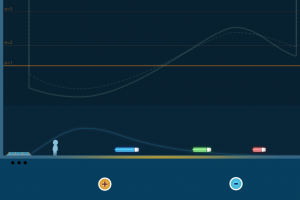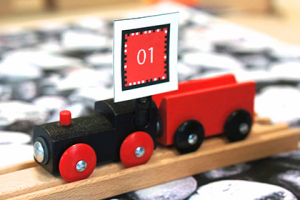|
The rise of ubiquitous technology has resulted in exponential growth in potential options for the design of interactive museum exhibits. We posit that using a framework of parental beliefs about learning and teaching for design can be useful to the HCI community when creating museum exhibits to facilitate learning. Our study builds upon Swartz and Crowley's framework of parental pedagogical approaches through analysis of 118 observations of social interactions between parents and children at museum exhibits. |
Designing a participative approach for multiple users to control their smart home.  |
Theories of Quantum Mechanics(QM) have been central to the philosophical and technological advances in physics and related fields. Some of the most important aspects of these theories are outside the bounds of human experience, predominantly explained and taught drawing on abstract mathematical formulas.  |
|
|
Our Passive Haptic Learning gloves teach the "muscle memory" of how to play piano melodies without the learner's active attention. These gloves can also help wearers recover sensation in their hands after a traumatic event, such as a partial spinal cord injury. The PHL gloves are fingerless gloves equipped with vibrators at each knuckle. As a mobile MP3 player plays each note ofa song, the gloves tap the finger that corresponds to the respective piano key. |
Our Passive Haptic Learning gloves teach the "muscle memory" of how to play piano melodies without the learner's active attention. These gloves can also help wearers recover sensation in their hands after a traumatic event, such as a partial spinal cord injury. The PHL gloves are fingerless gloves equipped with vibrators at each knuckle. As a mobile MP3 player plays each note ofa song, the gloves tap the finger that corresponds to the respective piano key. |
Previous studies have revealed that mental health patients share their social media with their clinicians during consultations. They explain what they posted or what they saw on social media or show the content using their smartphones. However, why and how patients share it has been underexplored. Therefore, we would like to learn: a) why and how they share their social media during consultations; b) how the experiences affected their therapeutic relationships; c) how technologies can better serve their needs for sharing social media with clinicians. |
Peer assessment is a popular approach for grading assignments that cannot be simplified to multiple choice questions in Massive Open Online Courses (MOOCs).  |
|
Food plays a huge role in shaping our identity. We engage in food practices daily, and through these engagements, we associate meaning with these specific acts. Our research explored this theme by deconstructing cultural identity through food narratives. How can we use narrative to make sense of and frame our identities around food within cultures and across different cultures? From this research, we gathered multiple stories around a single fruit - the persimmon. |
Augmented reality (AR) has long been explored as a tool for education, from textbooks that come to life, to plant identification training via the augmentation of actual flora, and a tangible molecular modeling tool. The power of AR (overlaying virtual content on the physical world) is that it can be used to show the "unseen" and the "hidden" information in the world.  |
During our research, we found out that only one-third of people finish their physical therapy due to reasons such as money and commute issues. Our team will be creating an accessible and affordable way to help people with chronic pain by exploring a physiotherapy intervention that users could access within the comfort of their homes. Our solution will engage people in a fun and innovative way. The aim is to also motivate users to continue their exercises, even after they feel better. |
|
|
Pipping aims to explore how players interact with physical objects while in Virtual Reality. The experience has been created for the HTC Vive utilizing the Vive Trackers to aid in the tracking of physical objects. In the experience, a player must return a fallen egg to its nest to begin hatching. The player then takes on a caretaker role building a bond while interacting with a variety of digital and physical objects. |
PixelCloak Lab: A tool used for the subversion of algorithmic analysis and surveillance by central network authorities like Facebook and Google. |
Professional esports athletes compete under tremendous pressure that has significant impacts on their physical, cognitive, emotional, and mental health. However, little is known for how to support this specific kind of demographic, which trends young and where its players often find themselves far from home working in a language they might not be comfortable with. Students in this team study how mobile health tools can mitigate these impacts and empower users through a co-design process with players and the staff that support them. Website: |


